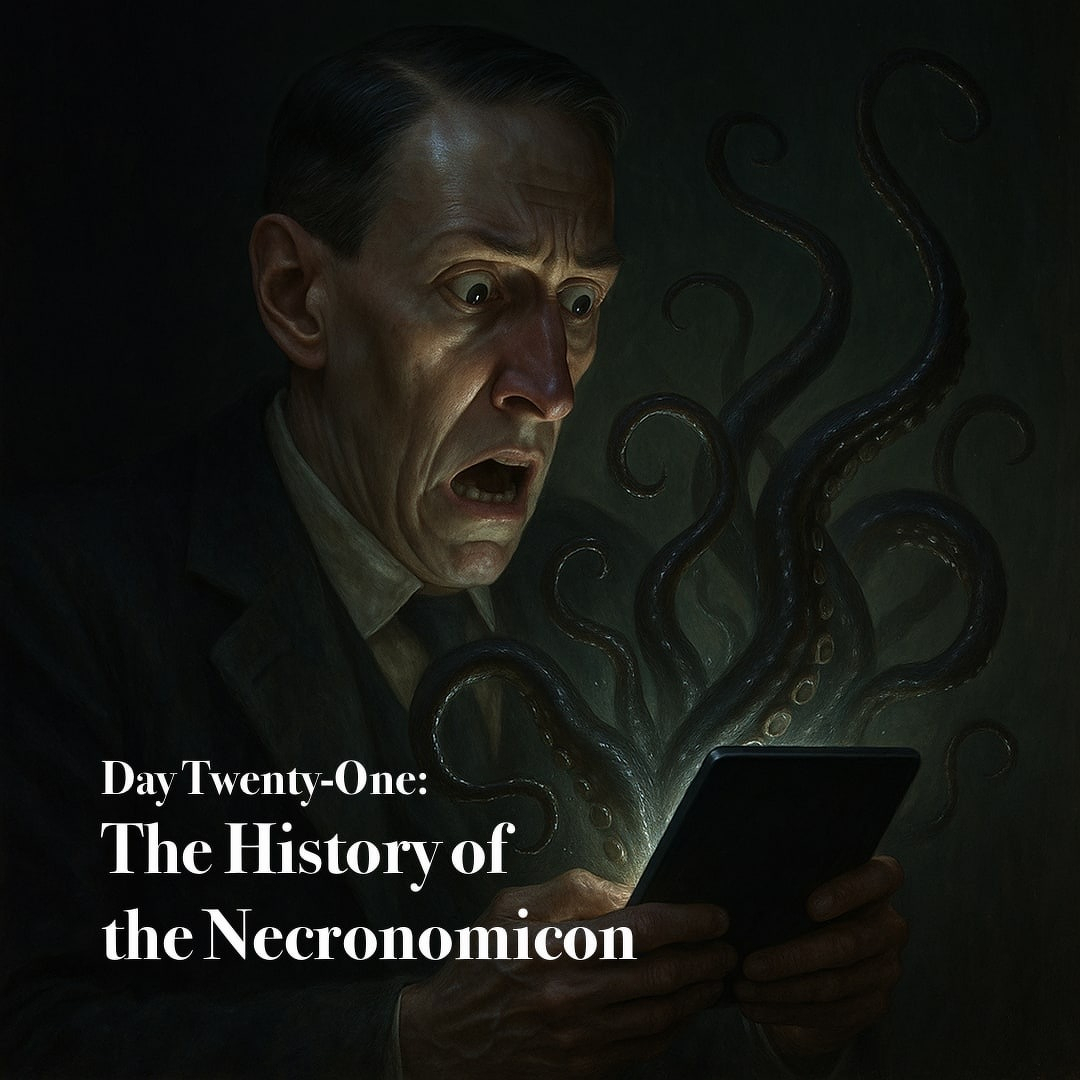The History of the Necronomicon

As I perused that most infamous of tales, H. P. Lovecraft’s dread account of “The History of the Necronomicon”, a hideous recognition seized my mind. For in its pages I discerned the very structure of that modern equivalent men call Wikipedia. Both stand as living grimoires, written and rewritten by unseen hands across the gulfs of time. Their countless links are runes of summoning; their citations, dire incantations binding thought to thought in a web too intricate for sanity. Each page opens into another abyss, a digital labyrinth where knowledge writhes and reason sickens beneath the weight of its own impossible infinity. Only one mark was lacking to complete the horror, those blasphemous words that whisper of uncertainty itself: Citation needed.
Let us review today’s tale, shall we?
The dread tome men name the Necronomicon was wrought in elder days by the mad Arab Abdul Alhazred, who set down his unhallowed visions beneath the title Al-Azif. Soon thereafter he perished hideously, torn asunder by invisible demons before a shrieking crowd. Though the primal Arabic script and its Greek translation have long been lost, five Latin renderings endure in hidden vaults—the British Museum, the Bibliothèque nationale, Buenos Aires, Harvard’s Widener Library, and the accursed archives of Miskatonic University—while certain furtive collectors whisper of rarer copies.
The figure of Alhazred sprang from Lovecraft’s youth, a phantasmal pseudonym born of One Thousand and One Nights, perhaps punning “all-has-read” or recalling Providence’s Hazard line. Yet the name itself jars against true Arabic, and later forms sought to render it “Abdullah Alhazred.” In 1927, Lovecraft cloaked this invention with his History of the Necronomicon, weaving real pontiffs and patriarchs with spectral scholars, a false chronicle that lent verisimilitude to his mythos. This artifice, pseudobiblia, became a weapon of dread realism, eagerly adopted by fellow dreamers such as Clark Ashton Smith.
But the snare of illusion caught more than readers: occultists mistook the jest for revelation, and counterfeit Necronomicons were soon pressed upon a credulous world. Critics discern in this device both Lovecraft’s orientalism and his loathing of the unfamiliar, for in casting the East as a land of mystery and terror, he mirrored his own prejudices. Others perceive a darker irony—that in conjuring the “Mad Arab,” he mocked the very academies that suppress and then commodify alien lore. Scholars now behold in his pages a divided mind, wherein fear of the foreign walked hand in hand with awe before its ancient splendor, and thus the shadowed figure of Abdul Alhazred stands at once as caricature and as veneration, a paradox born of the master’s own conflicted soul.